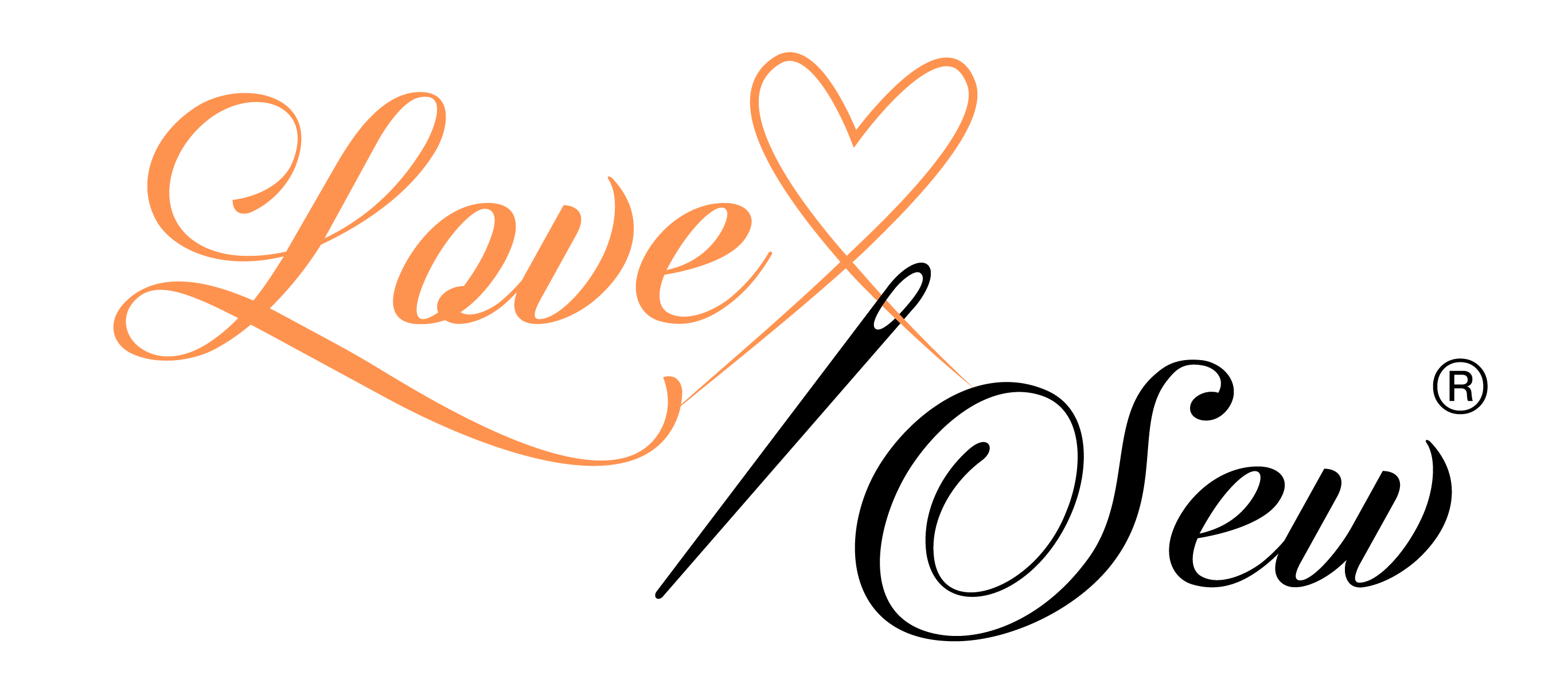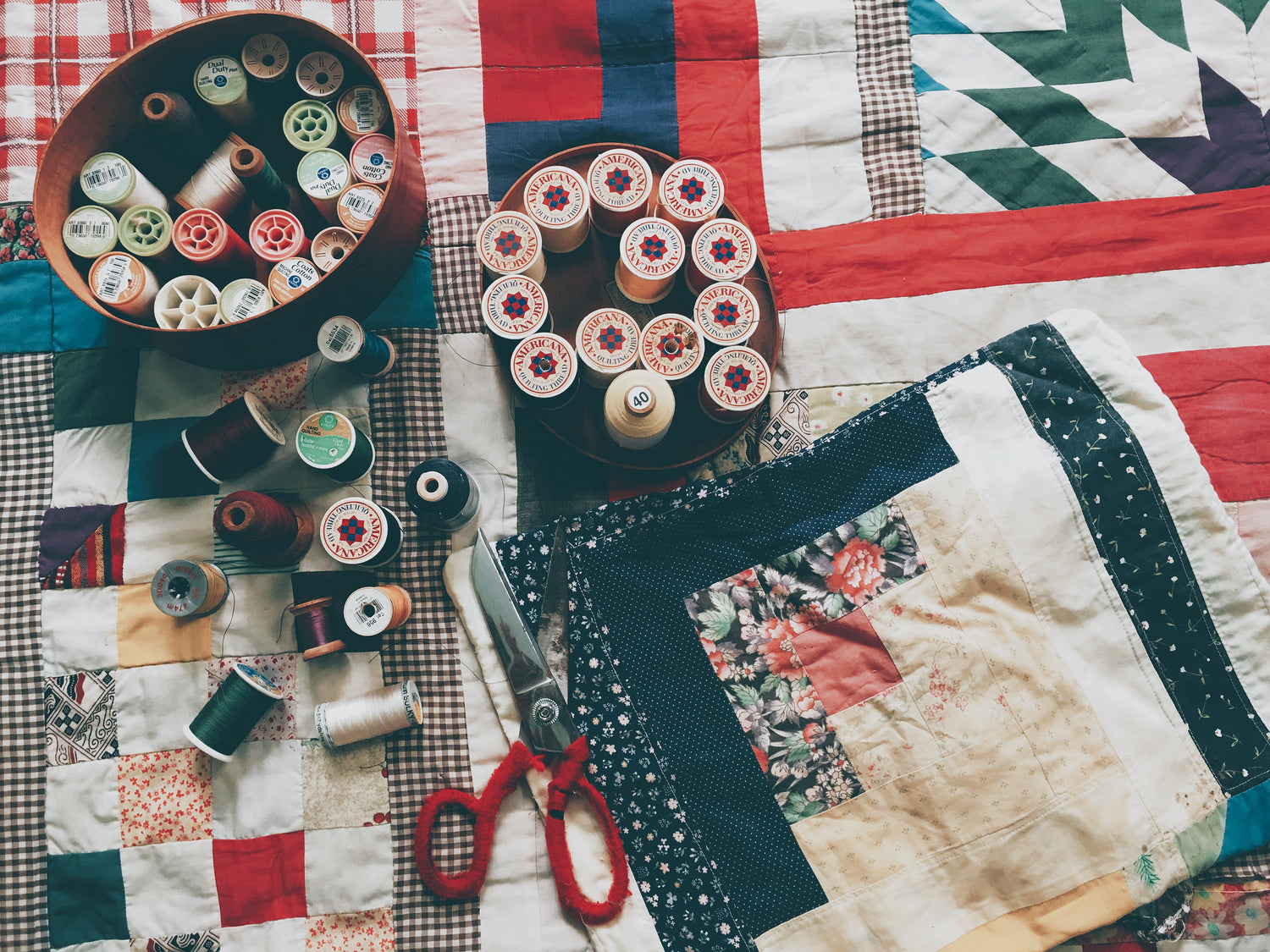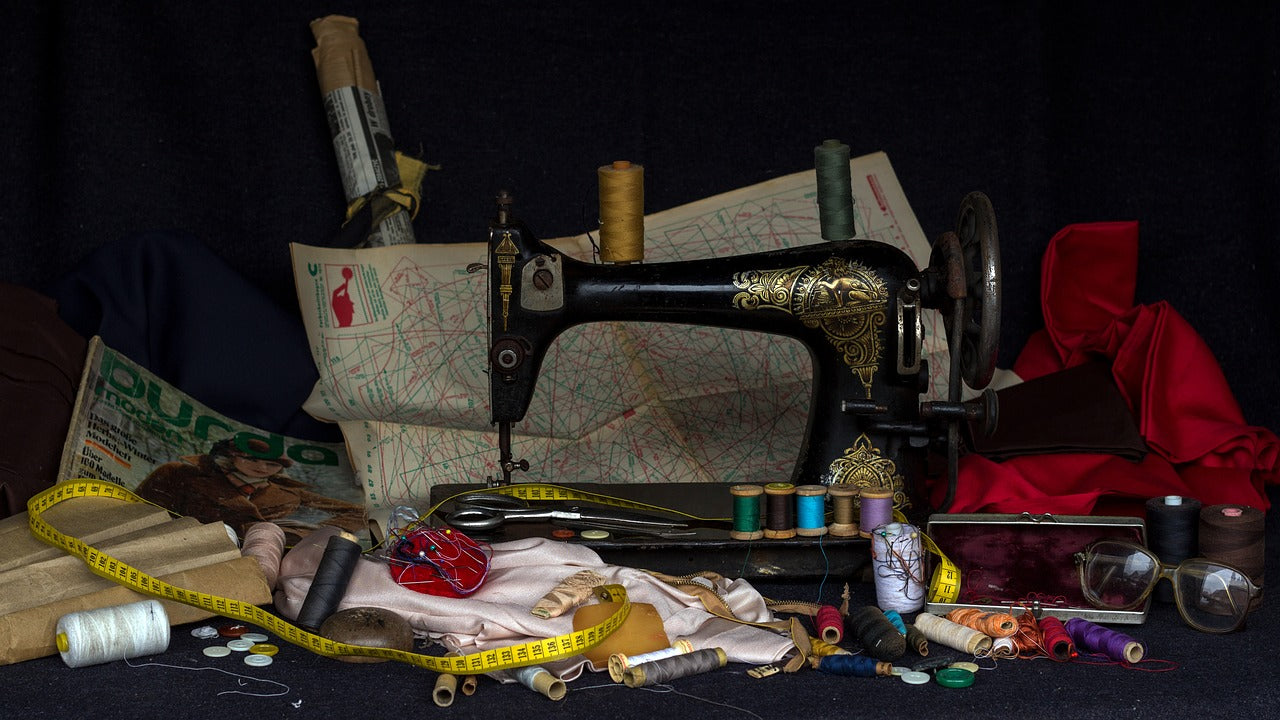Binding your quilt may be the final step in the quilting process, but it’s one of the most important. You’ve spent so much time putting together a beautiful top layer; you carefully basted and quilted it, trimmed your edges, and now it’s time to bind!
If you’re new to quilting and not quite sure what binding is, don’t worry, it can be confusing. Quilt binding is both an object and a process. The object “quilt binding” is the fabric that wraps around the outer edges of your quilt to secure all the layers together. The process of quilt binding is how this fabric layer is attached.
Binding is essential to the quilting process, although it can seem tedious. Binding seals in all your hard work and protects it from damage. Well-made quilts can be a beloved family heirloom, and can last for centuries. In this article, we’ll teach you how to properly bind your quilt step by step, so it can bring you and your family comfort and warmth for generations to come.
Materials
Before you begin binding your quilt, you must gather a few materials. First, you’ll obviously need the quilt itself. Second, you’ll need your sewing machine, or hand sewing materials if you choose to go that route. We recommend a walking foot attachment for your sewing machine, as it reduces the chance of puckering and wrinkles on your quilt.
Most importantly, you’ll need your binding. Binding can be bought at a fabric shop, or it can be easily made right at home. If you’re making your own binding, you’ll need quilting fabric, a rotary cutter and rotary mat, a large ruler, and an iron.
Making Your Own Binding
Making your own binding is fairly simple. It mostly involves cutting even strips of fabric. It’s usually made out of quilting fabric, which is a fine to medium-weight cotton fabric with a tight weave. Binding can either be cut on the straight grain or along the bias.
The straight grain is the lengthwise or crosswise grain of the fabric. It’s the direction the threads travel in woven fabrics. Cutting along the straight grain means that when your fabric is laid out straight in front of you, you’re cutting straight either vertically or horizontally, parallel to the edges.
The bias cut is cut on the 45-degree angle that bisects the fabric. If your fabric is placed straight in front of you, the bias runs diagonally across the surface of the fabric. Because it’s not cut along the grain, it has a good amount of stretch, and it’s ideal for binding projects with curved edges. However, it can be slightly difficult to cut, and cutting this direction can waste more fabric.
Cutting Binding Along The Straight Grain
We’re going to start by squaring up your fabric. Unfold your fabric, and press everything flat with an iron, including the fold it came off the bolt with. Now, refold the fabric and create a new center fold, making sure the selvages are perfectly aligned. Gently press along the new fold with your iron.
Now, carefully lay your fabric out on your rotary mat, and align the folded edge with one of the straight lines on your cutting mat. Then, place your ruler down on top of your fabric, near the folded edge and along another line on your cutting mat. Trim one side of your fabric to create a straight edge, thus “squaring up” your fabric.
Now, you can cut your first strip. We recommend cutting at a width of two to three inches. Open up your strip to ensure it’s cut in a straight line and lays flat.
Cutting Bias Binding
Cutting binding from the bias of your fabric is nearly identical to cutting binding on the straight grain, only you’re cutting in a different direction. You’ll begin by unfolding your fabric and pressing out the fold, but this time, you’re going to fold your fabric along the diagonal, creating a triangle.
Cut strips along the bias edge of your fabric at your desired width. Again, unfold your first strip to make sure it’s cut in a straight line. If you’re looking for a little help with creating your bias binding, try out our Bias Tape Maker Kit.
Joining Strips
Now, we’re going to join our strips together to create one big “tape.” This way, you can attach your binding to your quilt all together, instead of in sections. We’re going to join at the diagonal. This method helps reduce seam bulk.
To begin, take two strips of binding, and place them down, so they overlap at the ends, with one laying horizontally and the other vertically. Make sure one has its right side up, and the other has its right side down. They should create a 90-degree angle. Now, pin them together.
You’re going to sew the strips together where they meet, along the diagonal. You can use a ruler and draw a straight line with a pencil or pen from corner to corner. Sew the pieces together on your machine or by hand.
Once you’ve sewed them together, use a ruler to measure ¼ inch seam allowance, and trim away the excess. It should be noted that if you’re using bias binding, the ends of your pieces will already be cut at a diagonal, so you won’t have to trim away as much excess. Press the seam with an iron to make it flat. Continue this process until you’ve got a continuous piece of binding that can wrap around the entire perimeter of your quilt, with some to spare.
Now, you’ll want to fold the tape in half, wrong sides together, and press it all in place with an iron. This creates what we call “single-fold binding.” Now, it’s ready to be attached to the quilt edge.
How To Bind Your Quilt
Once you have your finished quilt and your binding tape, it’s time to attach. To begin, you’ll want to prepare your quilt for binding. You’ll do this by squaring off your edges, making sure they’re all neat and straight. Do this with a rotary cutter, a rotary mat, and a nice large ruler. If you’re working with fabrics that fray, an optional extra step is to go around the edges with a zig-zag or serger strip to secure them.
Now, you’ll begin to attach your binding to the quilt. Pin your binding strip to the right side of the quilt. The raw edge of your quilt and the raw edge of your binding tape should line up. Begin pinning about six to eight inches away from the corner of the quilt. You should also leave a tail of binding at least six inches in length. Don’t sew this; you’re going to use it later.
Roughly pin the tape around the entire perimeter of the quilt. Try to ensure that none of the joinings of the binding are in any of the corners, as this just adds extra bulk. If you need to, just reposition the end. Then, unpin so only the first side is attached by pins.
Begin sewing in place, about ¼ inch away from the edge, and stop about ¼ inch away from the first corner. When you get to the corner, you’ll create what’s known as a tuck corner, more widely known as a mitered corner. Remove the quilt from your machine, and fold the binding tape up at a right angle, then immediately down. This will create folds that simulate the appearance of a right angle.
Pin your corner in place, and continue pinning and sewing down your second side. Repeat this process, tucking whenever you get to a corner. Continue until you reach the point where you began the binding. Once again, leave a tail of about six inches. Do not sew in place. If you have extra binding tape at the end of your tail, you can cut it off.
Let your tails meet in the middle, and mark the spot where they meet. Open up the binding and pin the ends right sides together, matching the spot you marked. Stitch across. Quickly check that the length is correct, then trim the ends and press the seam open with an iron. Stitch the remaining section to the edge of the quilt, following the usual ¼ inch seam allowance.
Now, you’re going to turn your binding and sew it to the other side of the quilt. Fold your binding over the edge of the quilt to the wrong side, just covering the stitching. Pin or clip the edges to hold them securely. At the corners, fold your fabric diagonally so you have a neat corner fold. Sew the wrong side of your quilt and the edges of your binding all the way around.
Once you’re finishing sewing all the binding on, congratulations! You’ve bound your quilt successfully. Give yourself a pat on the back, and snuggle up under your beautiful, completed quilt.
Conclusion
Binding a quilt can be slightly tedious, but it’s an important final step that’s necessary to produce a professional, sturdy, beautiful quilt. With a little practice, you’ll be able to make your own binding and attach it to your quilts in no time at all.
To learn more about all things sewing and to shop our collection of handy sewing tools, visit Love Sew.
Sources:
Historical Society to unveil prized Martha Howard quilt | The Canton Citizen



Leave a comment
This site is protected by hCaptcha and the hCaptcha Privacy Policy and Terms of Service apply.